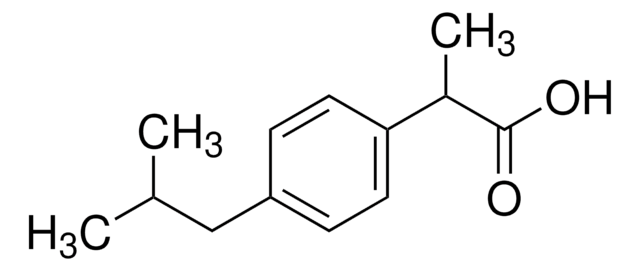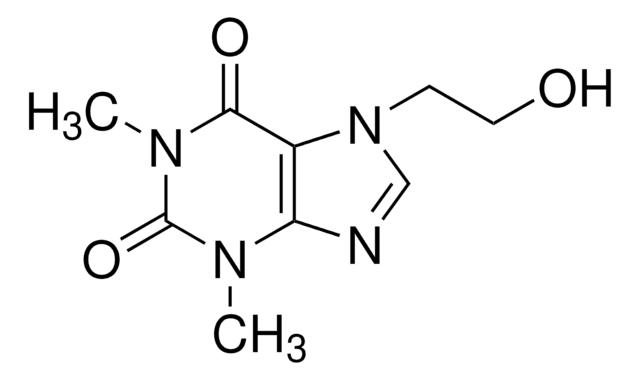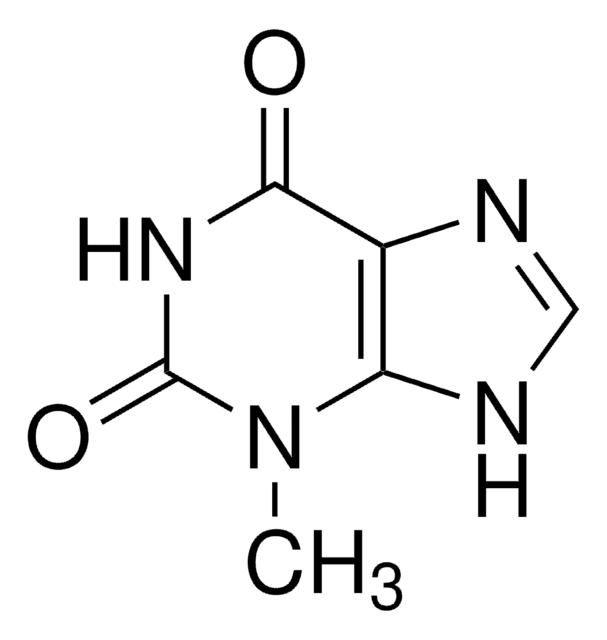1085003
USP
Caffeine
United States Pharmacopeia (USP) Reference Standard
Synonym(s):
1H-Purine-2,6-dione, 1,3,7-Trimethylxanthine
About This Item
Recommended Products
grade
pharmaceutical primary standard
API family
pentoxifylline, caffeine, dimenhydrinate
manufacturer/tradename
USP
mp
234-236.5 °C (lit.)
application(s)
pharmaceutical (small molecule)
format
neat
SMILES string
CN1C(=O)N(C)c2ncn(C)c2C1=O
InChI
1S/C8H10N4O2/c1-10-4-9-6-5(10)7(13)12(3)8(14)11(6)2/h4H,1-3H3
InChI key
RYYVLZVUVIJVGH-UHFFFAOYSA-N
Gene Information
human ... ADORA1(134) , ADORA2A(135) , ADORA2B(136) , ADORA3(140)
Looking for similar products? Visit Product Comparison Guide
General description
Application
- Caffeine Citrate Injection
- Caffeine Citrate Oral Solution
- Acetaminophen and Caffeine Tablets
- Ergotamine Tartrate and Caffeine Tablets
- Butalbital, Aspirin, and Caffeine Capsules
- Ergotamine Tartrate and Caffeine Suppositories
Analysis Note
Other Notes
related product
Signal Word
Warning
Hazard Statements
Precautionary Statements
Hazard Classifications
Acute Tox. 4 Oral
Storage Class Code
13 - Non Combustible Solids
WGK
WGK 1
Flash Point(F)
Not applicable
Flash Point(C)
Not applicable
Certificates of Analysis (COA)
Search for Certificates of Analysis (COA) by entering the products Lot/Batch Number. Lot and Batch Numbers can be found on a product’s label following the words ‘Lot’ or ‘Batch’.
Already Own This Product?
Find documentation for the products that you have recently purchased in the Document Library.
Customers Also Viewed
Articles
Xanthine is a purine base found in most human body tissues and fluids as well as in other organisms. Methylated xanthines (methylxanthines), which include caffeine, paraxanthine, theobromine, and theophylline, commonly used for their effects as mild stiµlants and as bronchodilators, notably in the treatment of asthma symptoms. This application shows the efficient separation of several common xanthines and may be applied their analysis in any number of desired matrices.
Our team of scientists has experience in all areas of research including Life Science, Material Science, Chemical Synthesis, Chromatography, Analytical and many others.
Contact Technical Service








